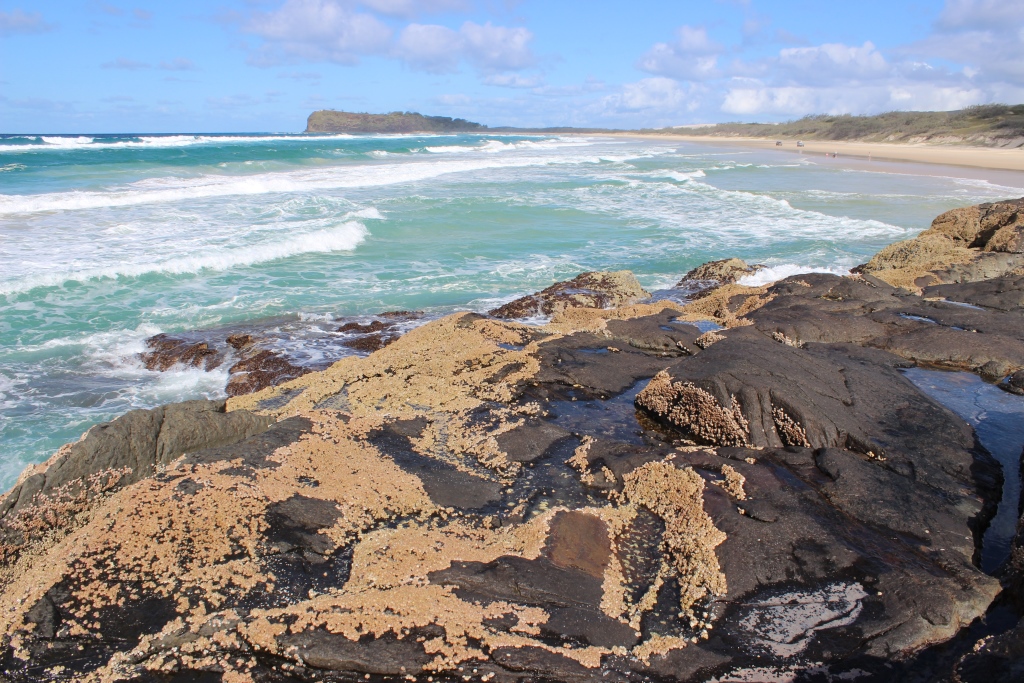|
|
Substrate consolidationConsolidated substrates are enduring, whereas unconsolidated or mixed substrates are less enduring. Consolidated substrates provide attachment sites for a diversity of biota including coral reefs and other important bioconstructors[2]. Quick facts
Consolidated substrates are hard, persistent substrates (e.g. reef, rocky and bedrock) that provide a base for structural macrobiota to colonise and grow. Unconsolidated substrates are mobile fragments that biota less frequently colonize (see Substrate Grain Size attribute). Substrates of intermediate consolidation (e.g. coffee rock, beach-rock) fall somewhere between these two extremes in terms of their hardness and capacity for biota colonization. Energy (e.g. wave energy) reflects off consolidated substrates, driving geomorphological processes, e.g. sediment transport processes of erosion and deposition. Rocky coasts were shaped into cliffs and platforms by wave energy associated with a particular sea level (see Terrain morphology). Some unconsolidated substrates (e.g. boulders) also reflect wave energy but, unlike consolidated substrates, can move around in response. (Consolidated) reefs are typically more biodiverse than unconsolidated substrates providing structural complexity, and supporting biota including hard and soft corals (e.g. either as a veneer on rocky reefs, or as coral reefs), macro-algae (e.g. kelps), sponges, molluscs (e.g. oysters, mussels), barnacles, polychaete tubeworms etc. Subtidally reefs are typically associated with highly diverse, often specialist, fish communities that are popular fishing hotspots. For this reason consolidation is considered an important biophysical proxy for biodiversity, and the consolidation attribute is routinely used to classify benthic substrates and ecosystems, and features that result from geomorphological processes (e.g. coral reefs, rocky reefs etc.). Humans create hardened shoreline structures (e.g. drainage channels, dams and barrages, revetment walls, jetties, aquaculture ponds, pontoons, boat ramps, pylons etc.) and hardened subtidal substrates (e.g. anchorages, aquaculture structures, artificial reefs, fish aggregation devices, shipwrecks etc.) (see the Naturalness qualifier). Such structures also modify energy and accelerate geomorphological processes (erosion, deposition). Typically these hardened shorelines have lower biodiversity than natural consolidated substrates. Queensland Intertidal and Subtidal Classification SchemeSubstrate consolidation falls under the 'Substrate' theme of attributes for the Intertidal and Subtidal Classification Scheme. It categorises the composition of unconsolidated substrates. Consolidated categories within the attribute substrate grain size are categorised as 'none'. The categories of substrate consolidation in this classification are consistent with Banks and Skilleter’s[1] bedrock (consolidated), whereas beach rock and coffee-rock are distinguished as ‘intermediate’ consolidation, due to their more friable nature and ability to provide potential attachment for biota. The ‘consolidated’ category aligns with dbSEABED’s geotechnically defined term ‘rock’, based on strength, dimensions and integrity. Boulders may also provide attachment for biota but are included within the ‘Unconsolidated’ category, since they are not bedrock and cyclones are capable of transporting rocks of this size. Applying the naturalness qualifier, ‘modified’ consolidated attributes include boat ramps, jetties and other infrastructure. Attribute category table - Substrate consolidation
Additional Information
References
Last updated: 23 July 2019 This page should be cited as: Department of Environment, Science and Innovation, Queensland (2019) Substrate consolidation, WetlandInfo website, accessed 25 June 2024. Available at: https://wetlandinfo.des.qld.gov.au/wetlands/ecology/aquatic-ecosystems-natural/estuarine-marine/itst/substrate-consolidation/ |

 — Department of Environment, Science and Innovation
— Department of Environment, Science and Innovation


